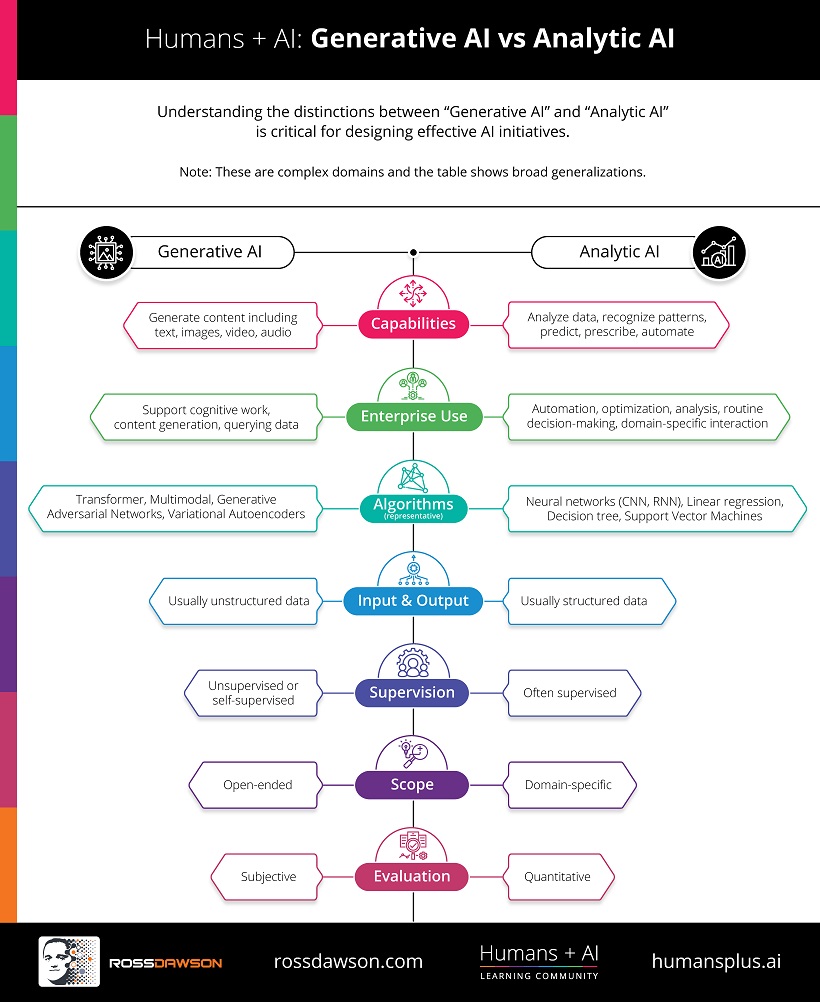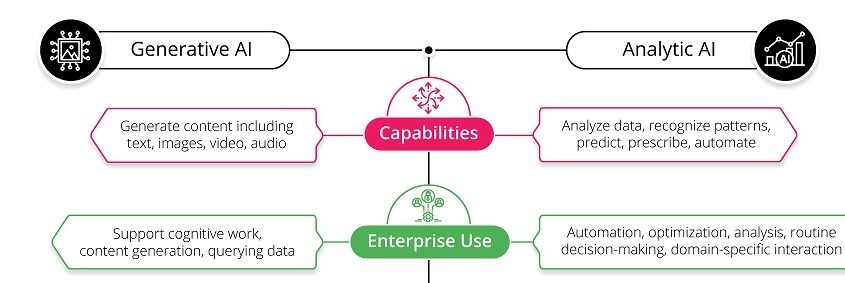The important distinction between Generative AI and Analytic AI
To tap the power of AI in organizations it is critical to understand the distinction between Generative AI and more traditional AI, which is perhaps best termed ‘Analytic AI’.
Recently I have frequently seen these domains confused. Generative AI is not all AI, as many imply. It is a relatively new domain with characteristics distinct from much of mroe traditional AI.
The following chart lays out some of the most important distinctions. Click on the image below for the full size image, and scroll below for more discussion.

In some ways the biggest difference, and the reason Generative AI has captured people’s imaginations, is because it has a natural language interface which anyone can immediately use however they want.
Analytic AI typically requires sophisticated systems and usage, including data architectures, model selection, and optimization techniques, with its application often ‘under the hood’ in business processes.
Both Generative and Analytic AI will be fundamental to creating the next generation of exceptionally successful organizations. This means complementary sets of capabilities need to be developed.
Of course these distinctions are not nearly as neat or clearly defined as suggested by this chart. AI is not one domain, but many overlapping and evolving technologies. Indeed, generative AI is in some instances exceeding the capabilities of analytic AI in its application domains.
However in AI strategy and indeed all corporate strategy, understanding these different types and applications of AI is essential.



